CITES CoP19 – an overall win for wildlife with greater commitments to protect a variety of species



Campaigners from EIA’s UK and US offices have returned from the 19th Meeting of the Conference of the Parties (CoP19) to the Convention on International Trade in Endangered Species (CITES) in Panama – and declared it an overall win for wildlife.
As well as CoP19, the summit from 14-25 November also featured the 75th and 76th meetings of the CITES Standing Committee (SC75 and SC76).
As usual, we were keen to ensure support for proposals giving greater protection to species, alongside calling for greater monitoring, transparency, compliance and enforcement, without which the Convention is limited in its effectiveness.
We raised the alarm over species of fauna and flora at risk from trade and highlighted the role of crime and corruption in undermining conservation. Our campaigners also lobbied key Parties, led and joined side event discussions, made interventions from the floor and actively participated in working group meetings.
Once again, the small but mighty EIA team punched above its weight in the often challenging and sometimes hostile CITES arena.
Overall, CITES CoP19 was a win for wildlife, with greater commitments to protect trees, sharks, reptiles, amphibians and songbirds from illegal and unsustainable trade. There were also some encouraging outcomes for the species and issues on which EIA’s delegation was focused.
Here, our campaign teams have pulled together the key outcomes on Asian big cats, elephants, rhinos, pangolins and vaquita porpoises, along with enforcement issues.
You can find more details on EIA goals and policy for CoP19, including reports, briefings and blogs, at our dedicated resources page.

Vaquita (c) IUCN-CSG
The Standing Committee considered a report from the CITES Secretariat which, following a mission to Mexico, documented the serious failings in enforcement of fishing for totoaba in and outside the Zero Tolerance Area that have led to the precipitous decline in the vaquita population in the Upper Gulf of California.
Following some discussion, the Committee agreed that Mexico must produce a compliance action plan to fully enforce a gillnet fishing ban by the end of February 2023.
During CoP19, proposed edits to the Secretariat’s draft Decision text strengthened what had been originally proposed; it was not as strong as EIA and its allies deemed necessary to ensure the vaquita’s future.
We proposed that an immediate suspension of trade against Mexico was required until it prepares the recommended compliance action plan and shows that the plan is deemed sufficient, is fully implemented and is demonstrating positive results. The Decision text was agreed by consensus in the plenary session (document CoP19 Com. II. 5).
The situation of the vaquita is dire. Fewer than 10 remain due to entanglement in fishing gillnets set to catch totoaba fish, although a threatened species, and without urgent and decisive enforcement action, it is unlikely that those remaining will survive until the next CITES CoP.

During the discussion on Asia’s big cats, India, Malaysia, Nepal, Bangladesh, Thailand, the UK and USA expressed concern over the lack of progress to effectively tackle trade and demand.
Consequently, some key Decisions around tiger farming, transnational enforcement cooperation, illegal leopard trade, wildlife trade tourism’ markets and demand-reduction were renewed. No new Decisions were adopted at this meeting, but the Parties have their work cut out for them to report on progress with these renewed Decisions by the 77th meeting of the CITES Standing Committee (SC77) in November 2023.
The CITES missions to examine tiger trade, tiger farming and the regulations that create an enabling environment for tiger farms to thrive in Thailand, Lao PDR (hereafter ‘Laos’) and Vietnam are scheduled to take place in January 2023. With NGO Four Paws reiterating its offer of funding, the missions to China, South Africa, the Czech Republic and the USA should also be completed in time for SC77.
At that point, having examined the mission reports, Parties can call for more specific and targeted action to phase out tiger farms and end trade, including domestic trade, in captive-bred tiger parts.
Pending funding, there will also be a Big Cats Task Force meeting, which among other issues will be looking at convergence in the trade chain of parts and products from tigers (wild- and captive-sourced), leopards, snow leopards, clouded leopards, lions and jaguars.
During SC75, immediately prior to CoP19, EIA pointed out the absence of any indication that Laos was taking action against the criminal enterprises running the five tiger farms in the country. Parties have given Laos yet another chance to show progress by SC77 or face trade suspensions.
Turning a blind eye to the role of Chinese, Vietnamese and Thai criminal networks in Laos has repercussions – and not just for tigers. The seriousness of the situation needs to be elevated to the highest levels of government, and not just in Laos – CITES Parties are treading on eggshells instead of confronting issues of corruption and criminality.
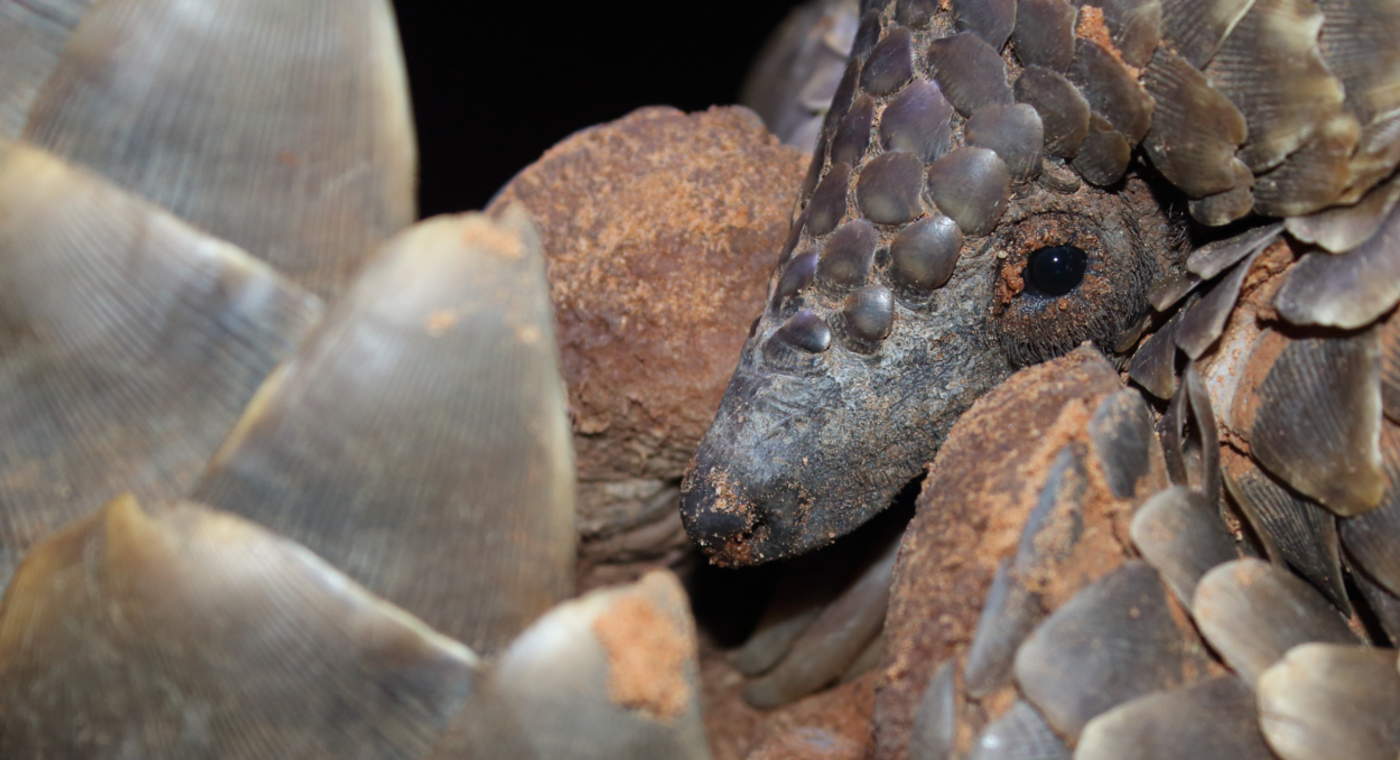
(c) African Pangolin Working Group
Pangolins were off to a good start when the UK’s proposed amendments to a document aiming to close pangolin markets garnered significant support among Parties on the floor.
While some Parties supported the document as written, a number agreed on the inclusion of the Secretariat’s comments and some acknowledged the burden of reporting – but all agreed that the proposed amendments would be effective for providing pangolins with urgently needed protection.
The document, with additional minor amendments from Thailand, was nearing the finish line until an intervention was made by China. Advocating for regulated legal markets instead of closure, China also pushed back on the issue of stockpile management, claiming it would not entertain CITES overstepping its scope by interfering with Parties’ domestic affairs.
Eventually, it was decided that the discussed amendments would be made into a Comm Document, which would be reopened later. In the spirit of cooperation, the UK and China met to negotiate new language, which in effect watered down the strength of the text on the closure of domestic markets.
Behind the scenes over one evening and an early morning, like-minded NGOs lobbied Parties in support of the original Comm Document without the new amendments, which paid off on the floor when many spoke up in support.
China ultimately requested a vote, resulted in the amended text being voted out, with 64 per cent voting no versus 36 per cent for yes. Subsequently, a vote on the original Comm Document led to a resounding yes, with 82 per cent in support.
There it was – consensus to close domestic markets in pangolin parts and derivatives. Despite the result, there were some remarks made on the floor by Parties not in support to express their dissatisfaction, stating that ‘any decisions interfering (with) our national sovereignty will not be acceptable forever’.
Yet, as Senegal said best, “we encourage countries in the name of democracy to accept the decisions that have been made … I urge countries to respect the outcome of this decision.”
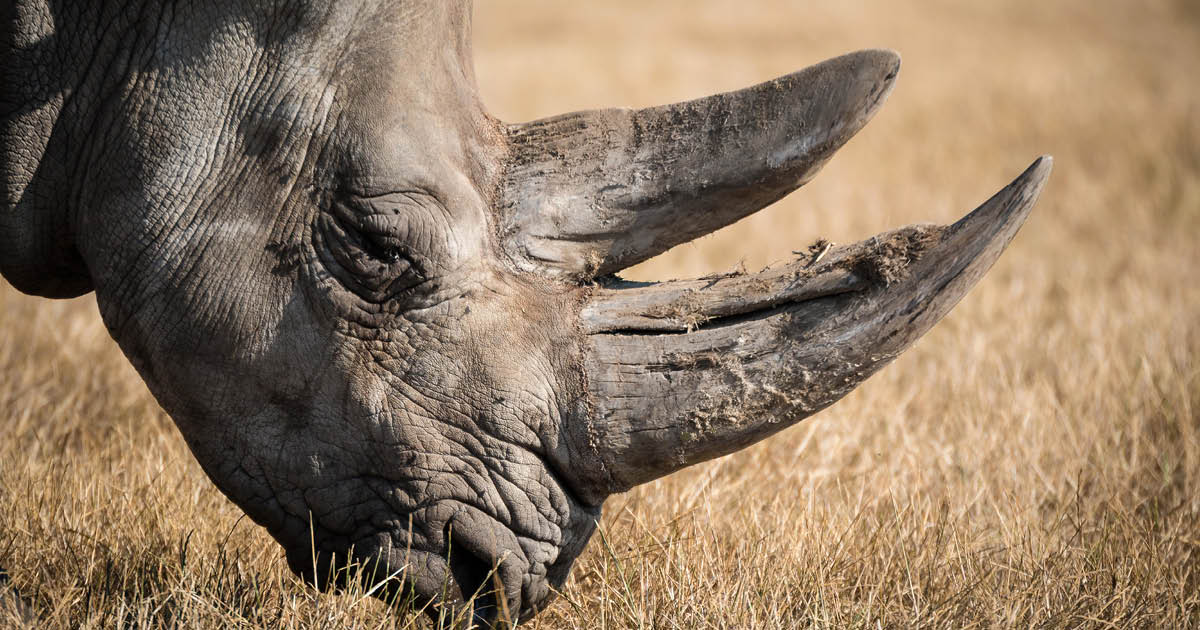
For the third CITES CoP in a row, Eswatini submitted a proposal to amend the listing for its population of southern white rhinos to allow for legal international commercial trade in rhino horn.
As in the previous two CoPs, Parties resoundingly rejected the proposal to dismantle the ban on international rhino horn trade. This is an important victory for rhinos, which continue to suffer population declines due to poaching fuelled by consumer demand for rhino horn in Asia.
Legalising international commercial trade in rhino horn would only to stimulate demand and increase poaching pressure on the world’s remaining rhinos.
Namibia also submitted a proposal to CoP19 to transfer its population of white rhinos from Appendix I to a lower level of protection in Appendix II, with an annotation limiting commercial trade to hunting trophies and live rhinos for in-situ conservation.

EIA campaigner Taylor Tench calls for greater protection to prevent trafficking in rhino horn (c) EIA
Namibia’s small, approximately 1,200-strong white rhino population has experienced an increase in poaching this year and does not meet the CITES criteria for a downlisting. Ultimately, Parties approved a compromise proposed by the EU to transfer to Appendix II, but with the removal of the language about hunting trophies from the annotation and stipulation that live animals can only be sent to locations within the natural and historic range of the species.
While an Appendix II listing is not ideal, the narrow scope of the annotation upholds the international rhino horn trade ban and ensures that the export of rhino hunting trophies from Namibia continues to receive the highest level of scrutiny from CITES Parties.
Parties also considered a suite of decisions aimed at encouraging collaboration and improved law enforcement actions, including the use of intelligence-led investigations, from many of the Parties most affected by rhino poaching and horn trafficking – Botswana, China (including Hong Kong SAR), Malaysia, Mozambique, Qatar, South Africa, UAE and Vietnam.
The UK proposed amendments to strengthen the decisions and ensure Parties report on their implementation (which is standard CITES practice); however, South Africa, Zimbabwe, Namibia and the UAE succeeded in stripping away all the UK’s proposed amendments and reporting requirements. Thankfully, at the 11th hour the US proposed a new decision directing the CITES Secretariat to provide updates to the Standing Committee at its next two meetings about how the affected countries are implementing the decisions. Parties adopted this proposal from the US by consensus.
Another major achievement for rhinos was the formal adoption of a decision to re-establish the CITES Rhinoceros Enforcement Task Force. It last met in 2013 and the forthcoming meeting will allow government law enforcement representatives to improve international cooperation and develop fresh approaches to effectively respond to rhino poaching and transnational rhino horn trafficking.
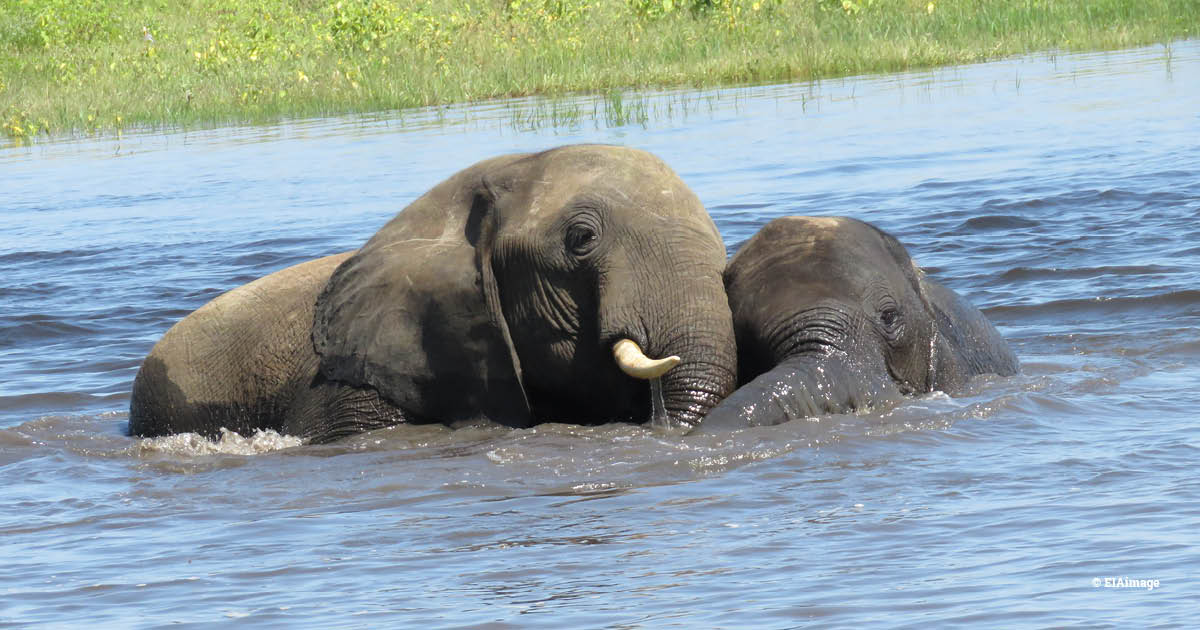
Elephants in the Chobe River, Botswana (c) EIA
Elephant proposals
Two opposing Proposals relating to African elephants were debated at this CoP. Proposal 4, submitted by Zimbabwe, sought to resume trade in, inter alia, raw ivory from Southern African elephant populations by removing several existing restrictions.
This Proposal drew on the rationale of the extensive conservation efforts by Southern African countries to allow these populations to substantially recover and argued that trade in elephant parts and derivatives could help offset the heavy costs associated with conservation efforts.
As a positive win, this Proposal failed by a substantial margin (85 per cent voted against it, including several Elephant Range States and the EU, UK and US), leaving the international commercial ivory trade ban intact. Efforts to re-open the debate on the decision in Plenary by Zimbabwe to permit the commercial trade in elephant leather goods were similarly thwarted.
The second elephant Proposal, Proposal 5 submitted by Burkina Faso and other West and Central African Parties, sought to uplist Southern African elephant populations from Appendix II to Appendix I to strength the protection of all populations.
After intense debate, the proposal was not adopted. As a result, the split listing of African elephants across Appendix I and Appendix II remains, as do the opposing views towards their conservation and trade status amongst range States. The opposing views between the West and Central Africa and Southern Africa spilled over from elephants into hippos, which were also not uplisting to Appendix I.
EIA also notes with concern the voting stances of the EU, US and UK on the second deliberation of Proposal 4 to permit Zimbabwe to commercially trade elephant leather. Despite their previous stance prioritising elephant conservation, the UK and the US abstained, while the EU voted in favour. Elephant skin trade has received relatively little oversight from CITES and there are concerns that an increase in legal skin trade could lead to increased poaching of elephants for both skin and ivory.
The pro-trade lobby at CoP19, especially pro-lethal trade, was large, exceptionally well-coordinated and organised. It made its presence and views known at many side events, made several interventions and lobbied Parties extensively. This was especially the case with the Southern African countries, where there is strong support to resume the ivory trade.
There is much work to be done to counter and rebut these positions at the next Standing Committee meeting and CoP.
The division between the Southern African Development Community (SADC) block and the West and Central African block was once again clear to see at this CoP. Consensus across such a vast continent is unlikely and yet the cross-boundary nature of the illegal ivory trade and the migratory behaviour of elephants requires a coordinated, regional response.
EIA calls for strengthened dialogue and engagement to identify and implement joint solutions to benefit Africa’s elephants.
Throughout CoP, there were also noticeable attempts to water down the scope and objective of CITES by proposing amendments to listing criteria unrelated to biological criteria, pushing for amendments to the voting rights based on in-country population sizes and by also drawing a line as to CITES’s application at a domestic trade/market level.
National Ivory Action Plan Process
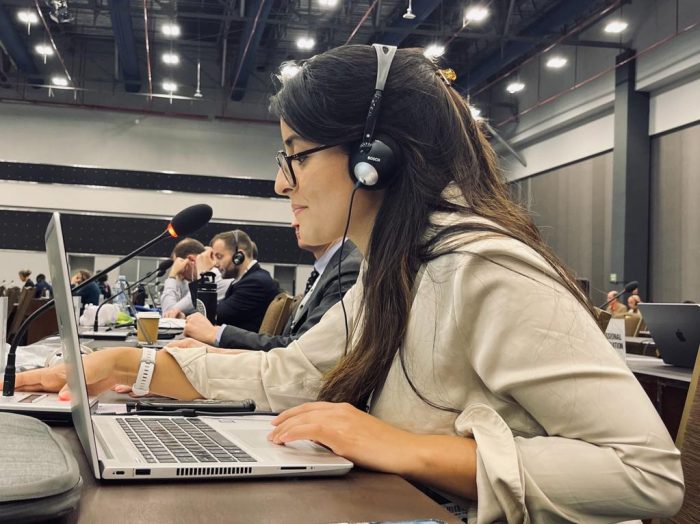
EIA’s Rachel Mackenna makes an intervention calling for a review of the National Ivory Action Plan process (c) EIA
EIA was delighted that, after years of campaigning, Parties agreed to take a closer look at how the National Ivory Action Plan (NIAP) Process can be strengthened to ensure countries affected by poaching and trafficking are making effective progress to address the issues.
After briefing more than 70 delegates on the need for the review as part of a side event hosted by EIA alongside the Government of Malawi, we joined a technical working group with partners WWF and WCS to develop the terms of reference of the review.
We warmly welcomed the strong commitment shown by Senegal, Malawi, the US, UK and the EU for the review which will address issues such as how to keep NIAPs up to date, how non-compliance with the process is addressed and how to integrate fresh tools to encourage dynamic and effective responses to poaching and trafficking.
We were, however, disappointed by the pushback from China, Singapore, Japan and the EU against reviewing how progress is evaluated, meaning that NIAPs will likely remain a self-assessment exercise with little independent oversight to verify progress.
EIA will now campaign for the rapid recruitment of an independent consultant to conduct the review within a realistic timeframe and for the implementation of the review’s findings and recommendations.
Domestic ivory markets
Nine African elephant range states submitted a document calling for Parties to implement CITES Resolution Conf. 10.10 (Rev. CoP19) by closing all domestic ivory markets that contribute to poaching and illegal trade.
Burkina Faso and Nigeria took the floor and singled out Japan for its exceptionally large open ivory market and called on the country to close its market to protect elephants.
EIA has consistently demonstrated how Japan’s ivory trade is plagued by inadequate market controls and illegal exports to countries that have shut down their ivory trade, such as China. Despite this, Japan has maintained that its domestic ivory market does not contribute to illegal trade and has refused to stop.
The document submitted by the elephant range states included a proposal for the CITES Secretariat to work with the MIKE-ETIS Subgroup (MIKE and ETIS are CITES programmes to review elephant poaching and illegal ivory trade) to conduct an analysis of ivory trafficking incidents linked to countries with legal domestic ivory markets, which would help CITES Parties make informed decisions about market closures.
CoP19 adopted this proposal, but not before watering down the language by incorporating changes proposed by the CITES Secretariat so that the analysis will be conducted “if feasible” and “subject to external funding.” The Secretariat was directed to provide an update on the analysis at the next meeting of the Standing Committee.
This CoP also agreed to renew a set of decisions directing Parties with domestic ivory markets to report on measures they are taking to ensure their markets do not contribute to poaching or illegal trade. The Standing Committee will review the responses received by Parties at its next two meetings and make recommendations as appropriate.
West and Central Africa remains a significant hub for wildlife trafficking, despite some encouraging developments in some key countries, such as Nigeria.
Some positive outcomes were secured at CoP19 aimed at strengthening wildlife law enforcement in the region. EIA participated in a Working Group to discuss proposals on improving enforcement and transnational cooperation and funding, with several EIA suggestions incorporated and supported by Parties including range states.
The resulting Decisions include encouraging countries in the two sub-regions to undergo needs-assessments using the International Consortium on Combating Wildlife Crime (ICCWC) Wildlife and Forest Crime Analytic Toolkit and to use mechanisms such as INTERPOL and the World Customs Organisation to exchange information on illegal wildlife trade and enforcement and to draw upon the text of the UN Convention Against Transnational Organised Crime (UNTOC).
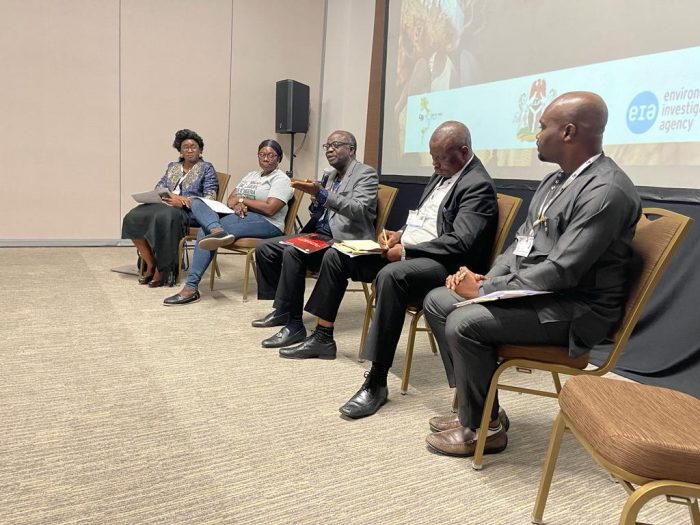
EIA moderated a side event with Nigeria on strengths and opportunities to address wildlife trafficking (c) EIA
A Decision calling for technical and financial support to West and Central African countries was also revised to expedite the implementation of measures and activities to combat wildlife crime in the region more effectively.
During this CoP, Nigeria, the world’s largest export hub for ivory and pangolin scales, demonstrated its commitment to addressing the illegal wildlife trade by strengthening legislative framework, tackling corruption and tightening up international cooperation with source, transit and destinations countries in Africa and Asia.
EIA moderated a lively panel discussion with Nigerian officials and our partner Africa Nature Investors Foundation, where representatives noted the development of two Memoranda of Understanding (MoUs) on combating wildlife trafficking with Cameroon and Vietnam.